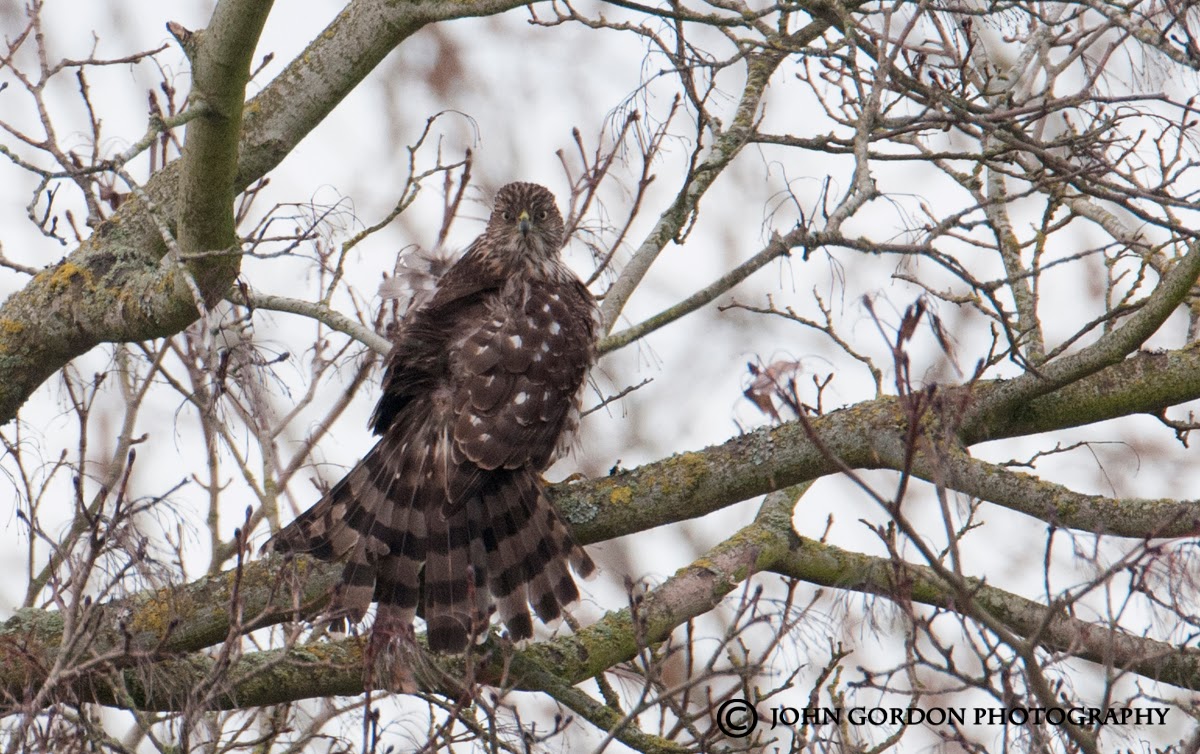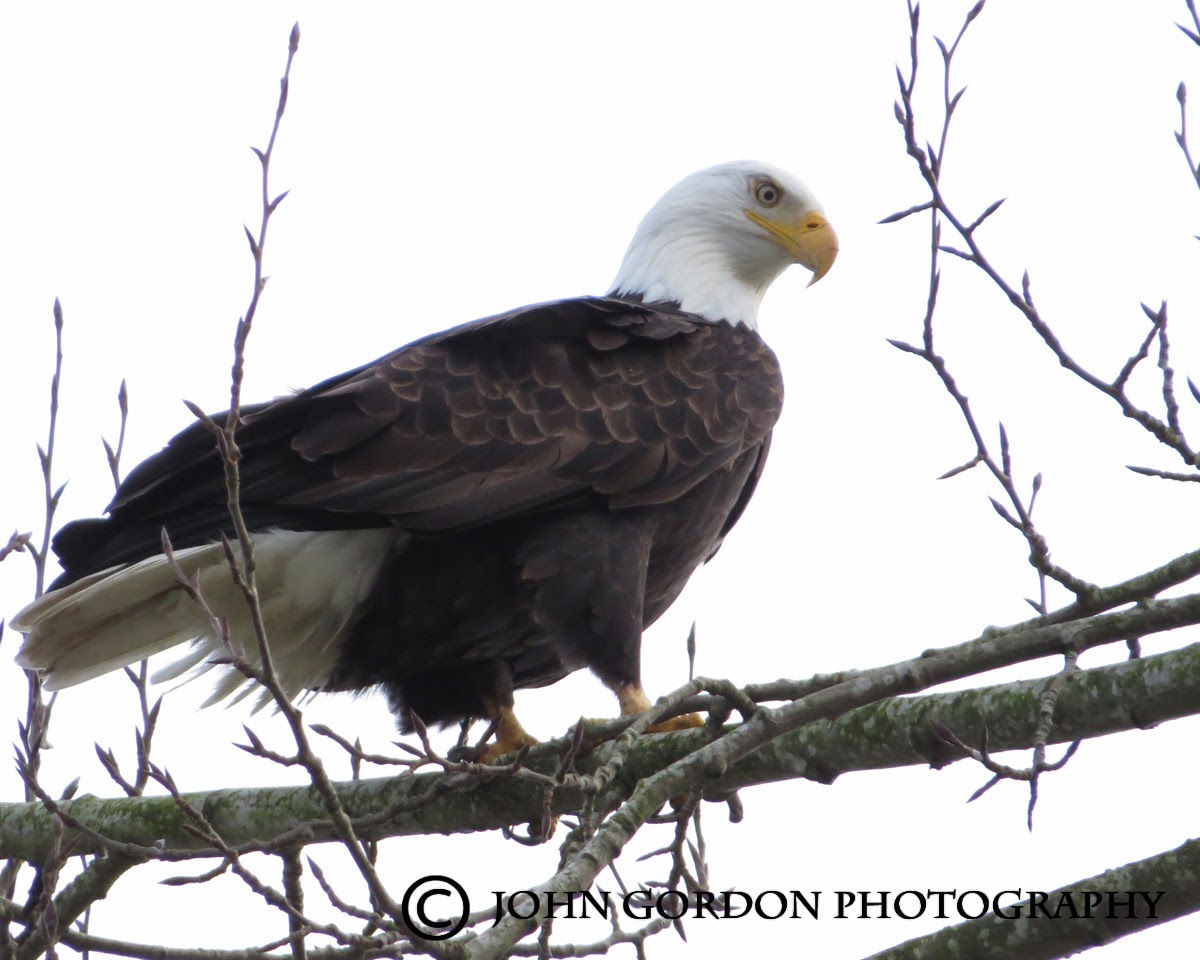Dec 29 2013 Langley Christmas Bird Count
Langley Field Naturalists
Sheila Puls and Kathy Masse
Langley Field Naturalists
Photos John Gordon
On Sunday, December 29 dedicated Langley Field Naturalists divided into 5 teams and set out from their meeting spot at ABC Country Restaurant with their clipboards and binoculars, to spend the day counting every bird they saw, both numbers and species, in the assigned count area. It was the annual North America Christmas Bird Count and the Fields Naturalists covered a pie shaped area, which is part of the large circle of the White Rock/Surrey Count area.
The day was drizzly and cool but happily the rain stopped after an hour. At 4:00 pm, we met again, to warm up with a hot chocolate and to tally final numbers. Stories of rare bird sightings and adventures of the day were shared and enjoyed by all.
We saw 67 different species which is one more than seen last year. However our overall numbers were only six thousand and sixty-one, down from eight thousand last year, probably because of the misty weather. We found American Robin counts are up. A highlight was the Cinnamon Teal which is rare in Langley in the Christmas Bird Count. Some saw large flocks of Pine Siskin, and American Goldfinch. A Peregrine Falcon and 3 American Kestrels rounded out other unusual sightings.
The 2013 Christmas Bird count, as it is each year, was a satisfying successful day for the Langley Field Naturalists!
Below are the stats from our group Mike Klotz and myself.
 |
Pileated Woodpecker (Dryocopus pileatus)
At 16.5 inches tall and a 29 inch wingspan, the Pileated woodpecker is the largest of North American Woodpeckers. |
Due to overcast and foggy conditions Sunday wasn't the best of days for a bird count but as the five groups from the Langley Field Naturalists (LFN) spread across Langley hopes were high. I birded with Mike Klotz. Below is the e-bird list Mike logged on his iPhone. One of the first birds we saw was a Belted Kingfisher followed a few minutes later by a Pileated Woodpecker. Both birds were seen on the Nikomekl Rotary Park floodplain in Langley City. Here are our groups stats (1 of 5 groups)
BirdLog Checklist Summary for: Sunday, Dec 29 2013
Number of Checklists: 5
Number of Species: 42
Checklists included in this summary:
(1): Nicomekl Park
Date: 2013-12-29 8:08 AM
(2): Langley--Fraser Hwy & Serpentine River
Date: 2013-12-29 10:13 AM
(3): CA-BC-Langley- Sendall Gardens
Date: 2013-12-29 11:14 AM
(4): Langley--Fraser Hwy & Serpentine River
Date: 2013-12-29 12:55 PM
(5): Langley-Blacklock School
Date: 2013-12-29 2:15 PM
18 Greater White-fronted Goose -- (4)
30 Canada Goose -- (1)
2 Gadwall -- (1)
188 Mallard -- (1),(2)
2 Ring-necked Duck -- (2)
2 Greater/Lesser Scaup -- (2)
2 Bufflehead -- (2)
15 Hooded Merganser -- (2)
8 Common Merganser -- (2)
1 Double-crested Cormorant -- (2)
4 Great Blue Heron -- (1),(2)
1 Northern Harrier -- (1)
1 Bald Eagle -- (2)
1 Red-tailed Hawk -- (2)
3 Ring-billed Gull -- (5)
5 Glaucous-winged Gull -- (4),(5)
8 Rock Pigeon (Domestic type) -- (4)
1 Anna's Hummingbird -- (3)
1 Belted Kingfisher -- (1)
2 Downy Woodpecker -- (1),(2)
1 Northern Flicker -- (1)
1 Pileated Woodpecker -- (1)
4 Steller's Jay -- (1),(3)
46 Northwestern Crow -- (1),(2),(3),(4),(5)
1 Common Raven -- (3)
34 Black-capped Chickadee -- (1),(2),(3),(4),(5)
1 Chestnut-backed Chickadee -- (1)
4 Pacific Wren -- (1),(3),(5)
2 Bewick's Wren -- (1),(3)
9 Golden-crowned Kinglet -- (1),(3)
7 Ruby-crowned Kinglet -- (3)
26 American Robin -- (1),(2)
2 Varied Thrush -- (1)
104 European Starling -- (2),(4)
4 Spotted Towhee -- (1),(4)
3 Fox Sparrow -- (1),(2)
 |
Song Sparrow (Melospiza melodia)
One of the common birds observed.
14 Song Sparrow -- (1),(2),(4)
2 Golden-crowned Sparrow -- (1),(2)
15 Dark-eyed Junco (Oregon) -- (1),(2),(3)
3 Western Meadowlark -- (4)
4 House Finch -- (1)
16 House Sparrow -- (1)
|
 |
Western Meadowlark (Sturnella neglecta)
The highlight of the day were three Meadowlark near the Langley Airport.
|














































